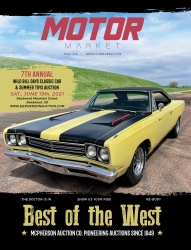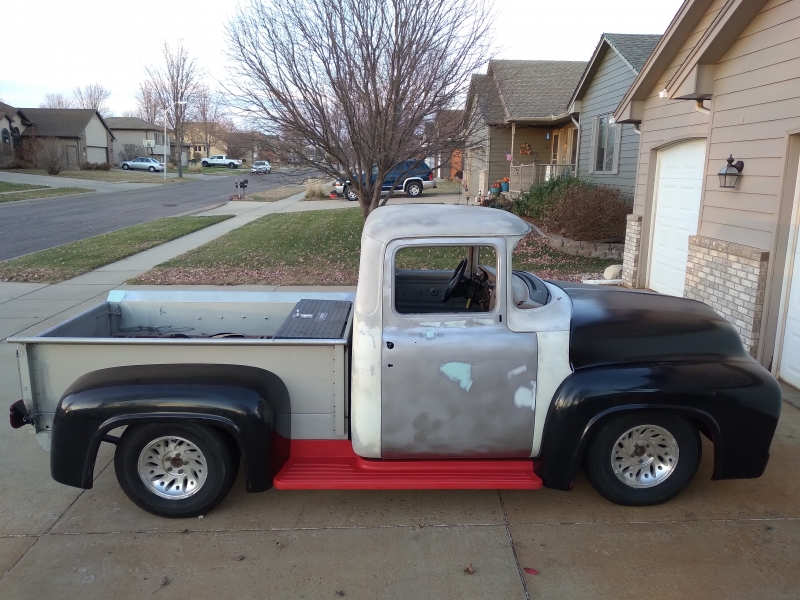More Issues
- August 2023
- July 2023
- June 2023
- May 2023
- April 2023
- March 2023
- February 2023
- January 2023
- December 2022
- November 2022
- October 2022
- September 2022
- August 2022
- July 2022
- June 2022
- May 2022
- April 2022
- March 2022
- February 2022
- January 2022
- December 2021
- November 2021
- October 2021
- September 2021
- August 2021
- July 2021
- May 2021
- April 2021
- March 2021
- February 2021
- January 2021
- December 2020
- November 2020
- October 2020
- September 2020
- August 2020
- July 2020
- May 2020
- April 2020
- March 2020
- February 2020
- January 2020
- December 2019
- November 2019
- October 2019
- September 2019
- August 2019
- July 2019
- June 2019
- May 2019
- April 2019
- March 2019
- February 2019
- January 2019
- December 2018
- November 2018
- October 2018
- September 2018
- August 2018
- July 2018
- June 2018
- May 2018
- April 2018
- March 2018
- February 2018
- January 2018
- August 2011
Re-Body
These days, it seems like everyone likes the older look of hot rods or classic vehicles in one form or another. Even with that, not everyone realizes how much work it takes to not only get a vehicle on the road while making it road worthy, but also maintaining the uniqueness of the ride. When building a vehicle with different pieces you put together, one of the hardest things to achieve more specifically when putting different suspension parts together in an old car, is getting an acceptable stance along with a good ride that doesn’t rattle your teeth too much when driving a long distance. Myself, after building a few cars over a 50-year period, have kind of figured out what works and what doesn’t in that area. Over those years, I have seen many frustrated people go through the motions playing around with different parts before they got to an acceptable level with a smooth ride. This sweet spot usually winds up being quite short between riding good or bottoming out. The bottoming out issues can and should be planned for, knowing that 2 inches of travel in the front, and that 3 inches of travel in the rear are needed for a minimum movement spacing between the frame and suspension related parts while rolling down the road.
Clay Seachris is no stranger when it comes to putting different car parts together with building a vehicle while understanding issues that can evolve during a build. Clay always had an idea of building a classic truck in the back of his mind, but did not want to build in an old school direction while trying to recreate a more modern feel. Three years ago, while looking through the internet at different build ideas, he got enthused by an approach to go a different direction with creating a classic appearing vehicle. The idea as it was portrayed seemed pretty straight forward with fitting an old body onto a relatively newer car or truck frame with everything already in place. I know he probably felt like it was a quicker way to create a classic vehicle starting with a newer frame equipped with everything modern on it including suspension, power steering, power disc brakes, computerized fuel-injected engine, AOD transmission, air conditioning and the list goes on. Clay thought that approaching a build this way could happen faster while still being a fun and different challenge - knowing what to expect as an end result.
Clay has had thoughts of driving a 1956 Ford pickup as far back as he can remember while living in Pierre, South Dakota. You might understand Clay if you are over 50 years of age with a bit of nostalgic thought, helping you remember seeing these old-weathered pickups rolling down highways and gravel roads in the country or idling around in small towns continuing to be used as they survived the ages. Today the ’56 Ford pickups remain to be one of the more appealing classic vehicles, more specifically when it comes to the pickup scene which has grown quite rapidly the last few years.
With the new direction of building a different way, Clay began gathering parts in May of 2019 starting with a bare shell of a ’56 Ford pickup cab and doors. Next on the list was finding a 2000 Mercury Mountaineer with not too many miles, to transplant the ’56 body onto the stripped-down frame. The reasonings for the Mercury Mountaineer choice were many, starting with the fact it was loaded with accessories on the 5.0 V8 with an all-wheel drive AOD transmission, but also the fact that the wheelbase lines up perfectly with that of the ’56. That kind of made it feel like a no brainer as Clay started with removing all the unnecessary sheet metal surgically above the Mountaineer’s frame while leaving enough of the original floor and firewall to line up and graft together inside the ’56 Ford shell. This took plenty of careful planning not to cut something out or off the original Mountaineer body/frame that had anything to do with the computer side of the running of vehicle. And believe me there are many sensors and or connections on newer vehicles that can aid or hinder its running.
With Clay approaching building the truck this way he was able situate the body on the frame to give it the ride height and stance he wanted. I know it seemed like an endless task making everything line up while coming together inside the body. Once Clay had that zeroed in with its correct placement with everything welded up, he added a new steel hood, box, fiberglass fenders and running boards all mounted to complete the truck’s outward appearance. While Clay has done the majority of the fabrication work up to this point in time, he has had some help from Ben Ekrem, Ron Roe and Nate Brower with getting the body work shaped together for painting. Clay also passed the original Mountaineer front power bucket seats, that he shortened down to fit the ’56 better, off to Sean Ahlers who reupholstered them to follow the black and red theme the truck will have. Clay found some larger 20-inch special edition 2016 Ford Explorer wheels that he had powder coated black to add to the image of the ’56 to give it a more aggressive look.
Although almost a two-year time span has evolved since Clay started what he thought was going to be an easy build, he is at a point now where he will soon paint it and there will be a new sinister looking red ’56 Ford pickup roaming the streets.



